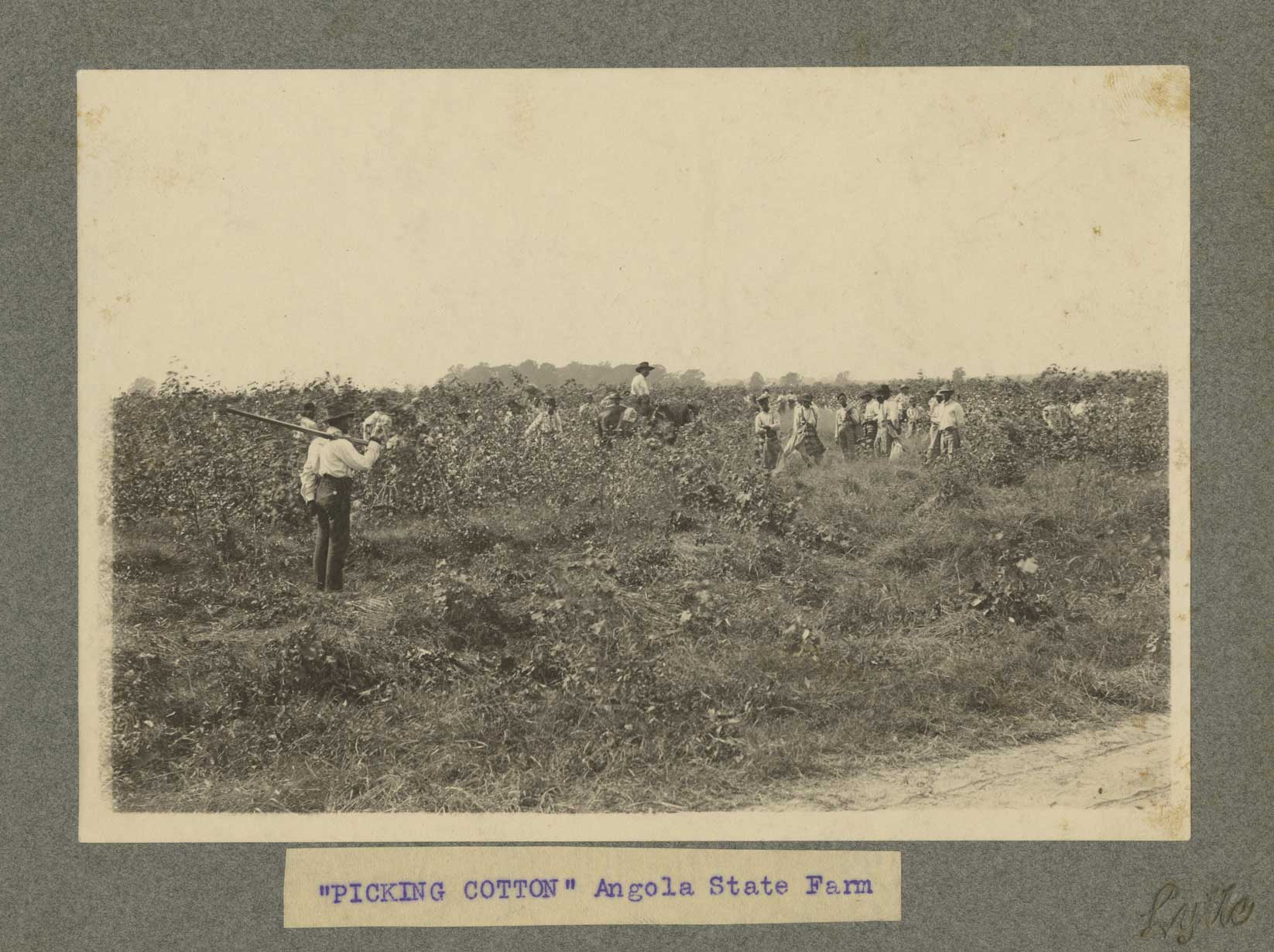
Prisoners picking cotton at Angola farm under the “convict leasing” system, c. 1901. (Image: Louisiana State University Libraries Special Collection/ Andrew D. Lytle’s Baton Rouge Photograph Collection)
Three people share their stories of strength and perseverance through decades of wrongful incarceration at Angola prison.
Special Feature 09.17.21 By Daniele Selby
When the 13th Amendment was ratified in 1865, slavery was formally abolished throughout the United States — “except as punishment for crime.” In reality, the policy only abolished chattel slavery — the form of slavery in which a person is considered the property of another.
Our clients, especially those wrongly imprisoned in the South, spent years working in prisons for mere cents per hour, while those beyond prison walls profited from their work. Some call these conditions “modern-day slavery,” but those who lived through it will tell you there’s nothing modern about it.
Those five words, “except as punishment for a crime,” carved out an exception that enabled incarcerated people to be used as free and forced labor and paved the way for mass incarceration, particularly of Black Americans, that we still see to this day.
Today, prisoners in most states are paid a nominal wage (in the range of cents per hour) for their work; however, a few states, including Texas, Georgia, and Florida, do not pay prisoners at all, and private companies save millions of dollars each year by contracting prison labor.
But nowhere is the evolution of slavery into mass incarceration more clearly seen than in places like Parchman Farm in Mississippi and Louisiana’s Angola farm, from which eight Innocence Project clients have been freed so far.
Below three wrongly convicted people — Innocence Project clients Malcolm Alexander and Henry James, and Innocence Project New Orleans client Calvin Duncan — share their stories of survival and strength across decades of incarceration in “America’s bloodiest prison.”

Prisoners picking cotton at Angola farm under the “convict leasing” system, c. 1901. (Image: Louisiana State University Libraries Special Collection/ Andrew D. Lytle’s Baton Rouge Photograph Collection)
After chattel slavery was abolished in 1865, Jim Crow laws — laws designed to limit the freedoms of newly emancipated slaves — were almost immediately instituted at the state and local levels. Such policies imposed curfews on Black people, prevented them from getting certain kinds of jobs, and kept them out of certain neighborhoods. The last of these laws were struck down as recently as the ‘60s with the Civil Rights and Voting Rights Acts.
As punishment for violating these laws — also called the Black Codes — Black men, women, and children would be sent to prison and were frequently “leased out” as labor to private businesses, including plantations and mines, under a system known as “convict leasing.” The system incentivized the mass incarceration of Black people to create a supply of cheap, if not altogether free, prison labor to replace the slave labor upon which the plantations and other industries had previously relied.
Angola, named for the country where most of its slaves came from, was one of those plantations. After the abolition of chattel slavery, Angola relied on the labor of prisoners leased from the Louisiana State Penitentiary. However, in 1898, the convict leasing system was banned. The state of Louisiana then purchased the 8,000-acre plantation in 1901, establishing the Louisiana State Penitentiary on the grounds and taking control over the prisoners previously leased to the plantation.
Today, the prison spans 18,000 acres — most of it farmland — and its slavery-era name is still in use. About 5,300 people are incarcerated at Angola, and approximately 1,800 people work there, many of whom live with their families on the prison grounds, which include schools, a golf course, tennis courts, and a pool for their use.
People incarcerated at Angola are paid a few cents an hour to work the same fields, picking cotton, corn, and more, from the same land slaves were forced to work 200 years ago. Some incarcerated people are even tasked with fishing, cooking, and doing repair work for the “free men” — as people imprisoned at Angola call the prison staff.
Angola is, essentially, a place where slavery never ended.
Malcolm, Henry, and Calvin all spent time in the fields of Angola after being wrongly convicted in separate crimes that occurred within years of each other.
Like 75% of people incarcerated at Angola, they are Black — another vestige of slavery still visible at the prison, which is the country’s largest. And, like 70% of Angola’s population, all three men were sentenced to life in prison.
Louisiana has one of the highest rates of exonerations in the country with 64 people having been exonerated in the state to date; however, this figure reflects only the wrongful convictions we know about and that have resulted in exonerations. And though Malcolm, Henry, and Calvin are all free today, their experiences of wrongful conviction still weigh heavily on them.

Malcolm Alexander. (Image: Lacy Atkins/Innocence Project)
Freed and exonerated in 2018 after 38 years of wrongful conviction
“It was like you see in old pictures of slavery.”

Henry James. (Image: Innocence Project)
Freed and exonerated in 2011 after 29 years of wrongful conviction
“I’m still getting shortchanged.”

Calvin Duncan. (Image: Courtesy of Calvin Duncan)
Freed in 2011 after more than 28 years of wrongful imprisonment
“The 13th Amendment didn’t end slavery for people like me.”
Leave a Reply
Thank you for visiting us. You can learn more about how we consider cases here. Please avoid sharing any personal information in the comments below and join us in making this a hate-speech free and safe space for everyone.